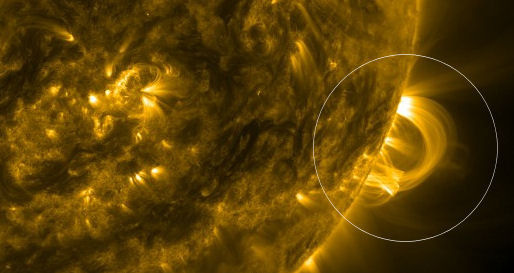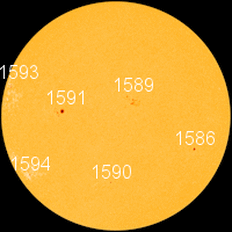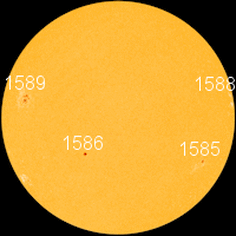| QUIET SUN: With no sunspots actively flaring, the sun's X-ray output has nearly flatlined. Solar activity remains low, and no strong flares are expected today. None of these sunspots is actively flaring. Solar activity is low. Credit: SDO/HMI AMAZING ICE HALO DISPLAY: Yesterday, sky watchers around the Marshall Space Flight Center in Huntsville, Alabama, witnessed something amazing: A complex network of luminous arcs and rings surrounded the afternoon sun. "I've never seen anything quite like it," says eyewitness Bill Cooke, head of NASA's Meteoroid Environment Office. Solar physicist David Hathaway snapped this picture of the display: |
"By my count, there are two sun dogs, a 22o halo, a parahelic circle, an upper tangent arc, and a parry arc," says Chris Brightwell, who also photographed the display. "It was amazing."
If the display really was a result of Sandy, sky watchers might not have to wait a decade for the next show. Some researchers believe that superstorms will become more common in the years ahead as a result of climate change, creating new things both terrible and beautiful to see overhead. Sky watchers in the storm zone should remain alert for the unusual.
Although low rainbows are seldom seen, they are actually quite common. They appear whenever raindrops are illuminated by a high-hanging sun. "A rainbow's center and the sun are always on opposite sides of the sky," explains atmospheric optics expert Les Cowley. "So when the sun is high, the rainbow is low. Indeed, as the sun climbs, the rainbow sinks--sometimes right into the sea."
www.spaceweather.com















 RSS Feed
RSS Feed